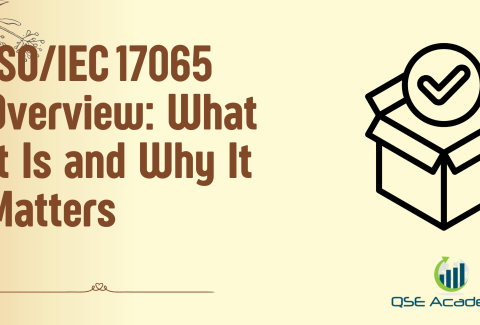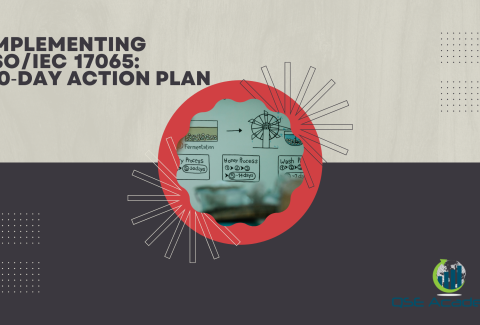ISO/IEC 17065 Transition Gap‑Analysis Template
Why a Gap-Analysis Template Matters During Transition
Here’s what I’ve noticed whenever a certification body transitions from an older system to the ISO/IEC 17065:2012 framework: the biggest risks aren’t in technical processes—they’re in overlooked gaps. Most teams believe they already comply “because nothing major changed,” when in reality the 2012 edition reshaped terminology, structure, impartiality, risk handling, and transparency requirements.
A structured gap-analysis makes this transition simpler. It helps you identify exactly where your system stands today, what needs updating, and what requires deeper corrective action. It also gives leadership a clear roadmap for closing gaps without guesswork or last-minute audit stress.
By using this gap-analysis approach, you’ll be able to quickly map your documentation, assess impartiality risks, align process flows, and verify competence requirements across your certification activities. It’s not just a checklist—it’s your transition blueprint.
Structural Requirements Review
A good starting point is reviewing your system’s structure. ISO/IEC 17065:2012 reorganized the clauses to align with the CASCO format, and this means your documentation should mirror the new order. If your procedures still reference outdated clause numbers, it will probably confuse your team and raise questions during audits.
Focus on roles, governance, impartiality commitments, and responsibilities. Your transition template should include a column for “current status” and another for “updated mapping.”
Here’s an example of what I usually see: a certification body keeps its old committee structure without referencing impartiality oversight. They’re technically compliant, but the documentation reads like a 1990s structure—and that creates unnecessary audit friction.
Pro Tip: Build a crosswalk table showing old clause → new clause → updated evidence.
Common Pitfall: Assuming your structure is compliant because leadership roles haven’t changed. Documentation must reflect the new requirements explicitly.
Impartiality & Risk Review
Impartiality is often the most sensitive area during transition. ISO/IEC 17065:2012 expects certification bodies to document impartiality risks in a more evidence-based way. This isn’t a one-time exercise—it’s ongoing.
Your gap-analysis template should include:
- Impartiality committee structure
- Risk assessment frequency
- Conflict-of-interest documentation
- Mitigation plans
- Evidence of review and monitoring
One CB I worked with assumed that because they had “no conflicts,” they could skip formal documentation. Their assessor disagreed and issued a non-conformity because nothing was recorded, analyzed, or reviewed.
Pro Tip: Include a column titled “Impartiality Risk Evidence Reviewed?”
Common Pitfall: Treating impartiality as an annual meeting topic instead of active risk management.
 Certification Process Evaluation
Certification Process Evaluation
Now that you’ve reviewed impartiality, shift to the certification flow. The 2012 version draws a clear line between evaluation, review, and decision. This separation protects independence.
You should assess:
- Competence requirements for evaluators
- Who performs reviews
- Who signs decisions
- Surveillance planning
- Sampling methodologies
- Documentation of decision rationale
When I’ve audited CBs, the most common issue is blending roles because “we’re a small team.” That doesn’t work anymore. Independence must be demonstrated clearly.
Pro Tip: Use a swimlane diagram to visualize evaluator → reviewer → decision-maker.
Common Mistake: Letting evaluators influence final decisions without proper review separation.
Documentation & Records Assessment
Documentation gaps cause more non-conformities than technical issues. ISO/IEC 17065:2012 requires complete traceability from evaluation to decision, including competence records, subcontractor assessments, scheme documents, and complaint resolutions.
This section of your gap-analysis should verify:
- Version control
- Terminology alignment (no “Guide 65” references)
- Evidence retention
- Linkage between procedures and clauses
- Accessibility of records
I once reviewed a CB whose procedures were excellent—but they still referenced ISO Guide 65. It instantly signaled incomplete transition.
Pro Tip: Add a column for “Updated Terminology Verified?”
Common Pitfall: Using old document templates that don’t reflect 2012 expectations.
Customer Interaction, Complaints & Appeals Review
Transparency became far more important in ISO/IEC 17065:2012. Your template should check:
- Public information accuracy
- Complaint procedures
- Appeals procedures
- Differences between complaints vs appeals
- Correct publication of certification rules
More than once, I’ve seen CBs get a non-conformity because their website still listed outdated certification rules while their internal documents were updated.
Pro Tip: Assign responsibility for public-facing content in your gap-analysis template.
Common Mistake: Tracking appeals and complaints together—these must be separated.
Resource & Competence Requirements
This section helps you assess whether your team meets competence expectations. ISO/IEC 17065:2012 requires documented competence criteria for evaluators, reviewers, decision-makers, and subcontracted personnel.
Your gap-analysis should evaluate:
- Competence matrix
- Job descriptions
- Training records
- Subcontractor competence
- Evidence of evaluation
A CB I worked with had superb technical experts but no documented competence framework. They knew their people were skilled—but they couldn’t prove it.
Pro Tip: Link competence criteria to specific responsibilities.
Common Pitfall: Using generic competence descriptions that don’t match decision roles.
Management System Gap Identification
ISO/IEC 17065:2012 allows two management system options—A and B. Your gap-analysis must show how your internal audits, management reviews, corrective actions, and documentation support your chosen option.
Check:
- Internal audit coverage
- Management review inputs and outputs
- Corrective action traceability
- Links to structural and impartiality requirements
Pro Tip: Cross-reference internal audit findings with the new clause structure.
Common Mistake: Relying on outdated ISO 9001 versions without linking them properly to ISO/IEC 17065.
Prioritization & Action Plan
Once the gaps are identified, you need to prioritize. Some issues affect accreditation directly (e.g., impartiality), while others are lower risk (e.g., terminology alignment).
Your template should categorize gaps as:
- High priority
- Medium priority
- Low priority
In one transition project I guided, prioritizing reduced total audit preparation time by almost half. The team focused on impartiality, decision independence, and documentation clarity first—everything else followed naturally.
Pro Tip: For each high-priority gap, assign a responsible person, deadline, and required evidence.
Summary Dashboard
This final section gives leadership a visual snapshot of transition readiness. Use color coding for clarity:
- Red: Major gaps impacting accreditation
- Yellow: Partially compliant
- Green: Fully compliant
Add a “Ready for Accreditation Assessment?” indicator to summarize current status.
Pro Tip: Update this dashboard weekly during transition.
FAQs
What’s the first step in a transition gap-analysis?
Start with structural and impartiality reviews. These areas have the greatest impact on compliance.
How much evidence should be included?
Evidence must be specific, traceable, and linked to clause numbers. Generic statements don’t pass during assessments.
Do we need to change every document?
Only documents that reference outdated terminology, process flows, or clause structures. Some templates can be updated instead of rewritten.
Conclusion — Turning Gap-Analysis Into a Smooth Transition Strategy
A transition only becomes overwhelming when you don’t have structure. A well-designed gap-analysis template simplifies everything. It helps you see the whole picture, prioritize effectively, and move confidently toward accreditation readiness.
Over the years, I’ve seen how a systematic approach reduces stress and eliminates last-minute surprises. With the right mapping, evidence tracking, and prioritization, your transition becomes predictable, manageable, and audit-ready.
If you want support customizing your gap-analysis or building your crosswalk matrix, I can guide you step-by-step
Melissa Lavaro is a seasoned ISO consultant and an enthusiastic advocate for quality management standards. With a rich experience in conducting audits and providing consultancy services, Melissa specializes in helping organizations implement and adapt to ISO standards. Her passion for quality management is evident in her hands-on approach and deep understanding of the regulatory frameworks. Melissa’s expertise and energetic commitment make her a sought-after consultant, dedicated to elevating organizational compliance and performance through practical, insightful guidance.









